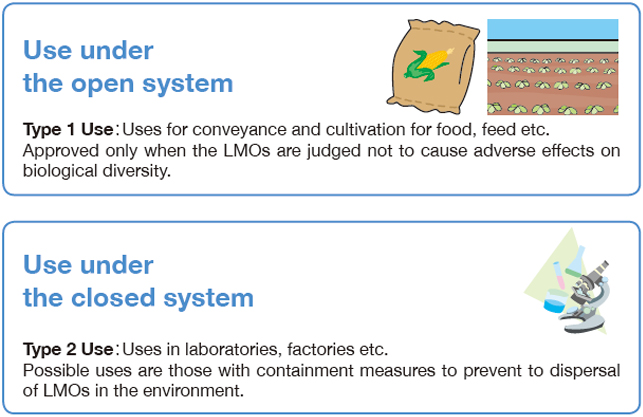“Japanese Law” for the Biosafety
What is the Cartagena Act*?
*Act on the Conservation and Sustainable Use of Biological Diversity through Regulations on the Use of LMOs.
Cartagena Act is the law that regulates the use of LMOs, to ensure the precise
and smooth implementation of the Cartagena Protocol on the Biosafety to
Convention on Biological Diversity. This act provides for rules to assess the effect
of LMOs on biological diversity in advance and also the way to appropriately use
LMOs.
The Cartagena Act separates uses into two types and uses different approaches
for evaluating each type.

For the remainder, the act provides the systems which examine import of non-approved LMOs, and the ways to provide the information to partners in exports.
History of the Cartagena Protocol
■International Movement
December 1993 Convention on Biological Diversity enters into force
November 1995 Second Conference of the Parties
(Decide to start the negotiation to develop protocol on biosafety)
January 2000 Adoption of Cartagena Protocol
September 2003 Cartagena Protocol enters into force
■Movement in Japan
February 2004 Cartagena Act becomes effective and the Cartagena Protocol enters into force in Japan.
*The Cartagena Protocol is named after the location of the Conference of the Parties which was held in Cartagena, Colombia, where the protocol was discussed in 1999.